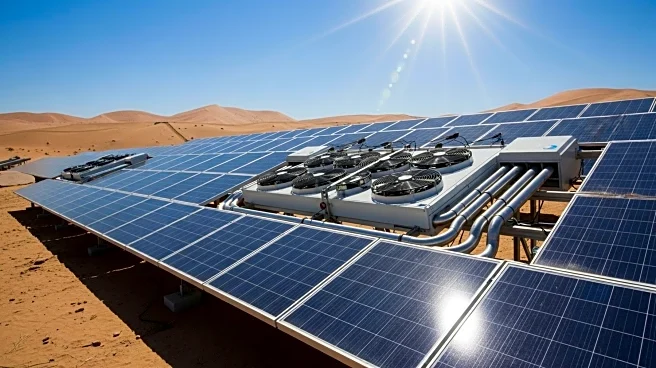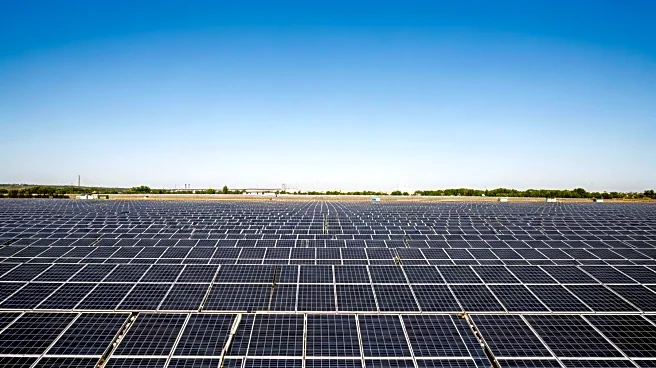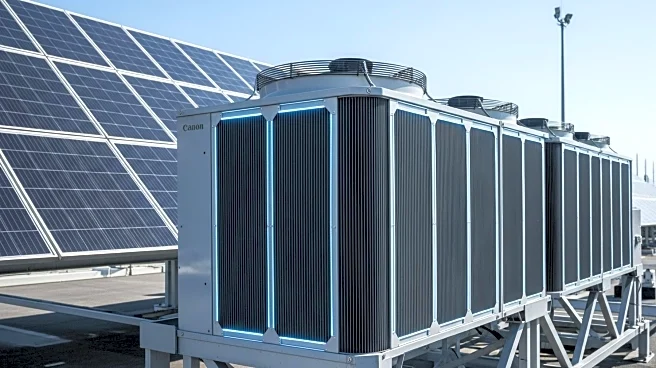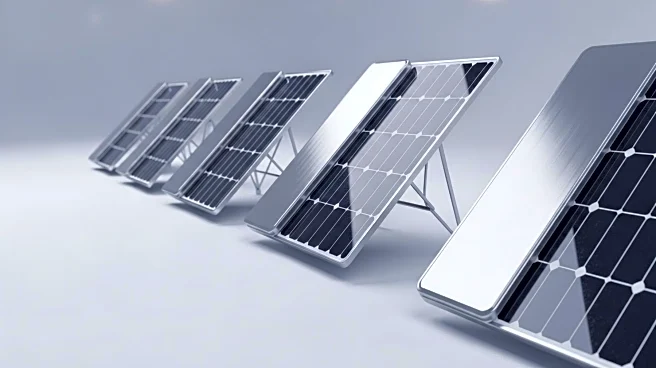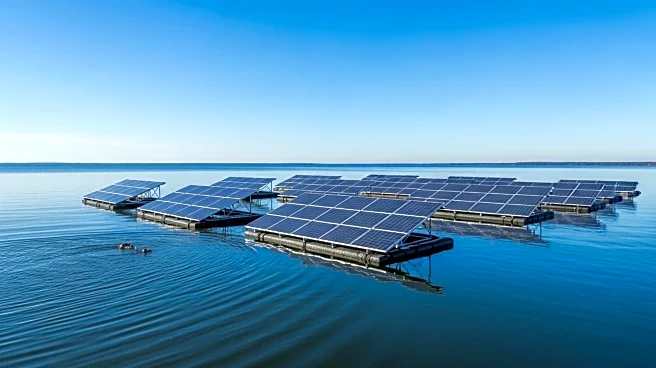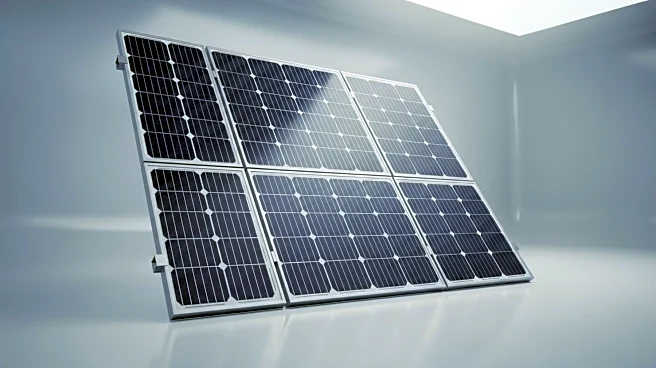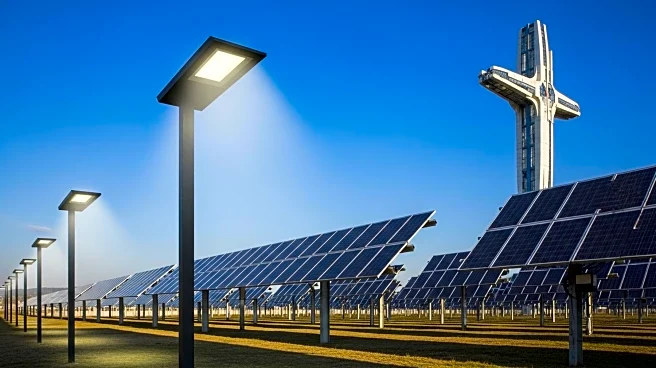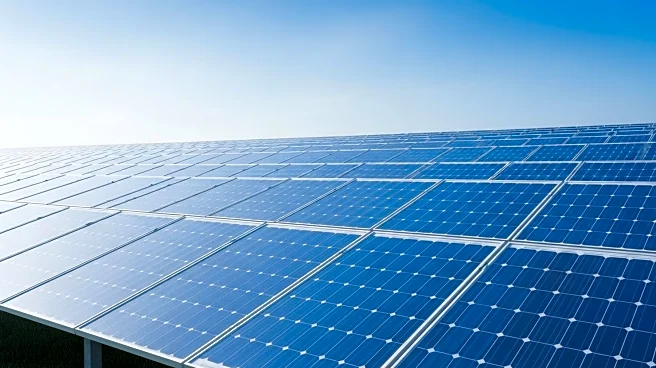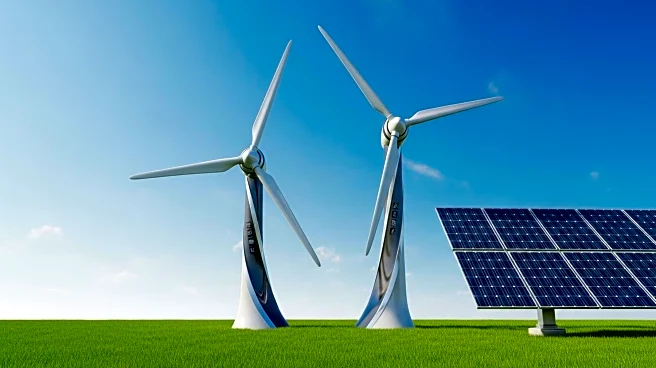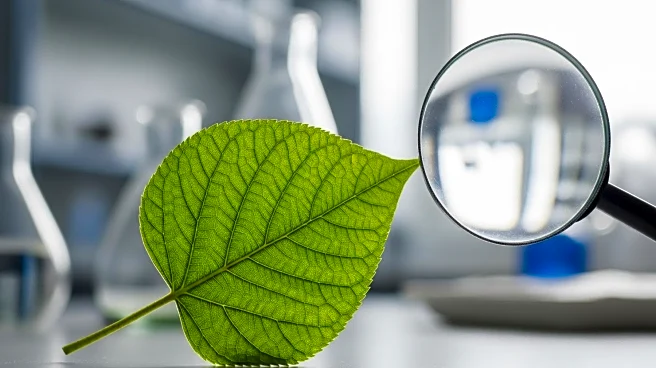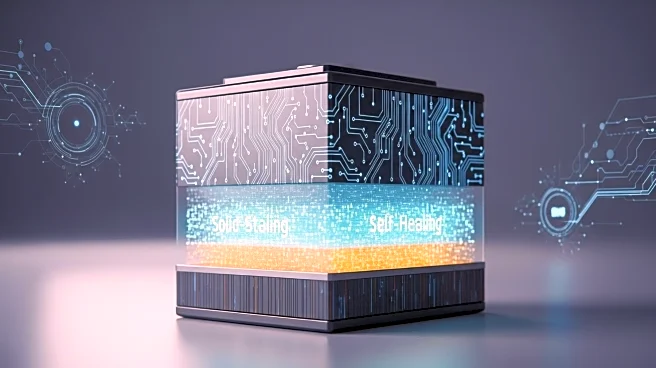What is the story about?
What's Happening?
Recent research has focused on the integration of phase change materials (PCM) with photovoltaic (PV) systems to improve their thermal management and efficiency. The study highlights the potential of PCM technology to lower PV panel operating temperatures by up to 10.26°C, resulting in an efficiency improvement of up to 3.73%. Despite these promising results, the study identifies significant economic challenges, as current PCM costs are too high for widespread adoption without substantial price reductions. The research underscores the need for advancements in PCM cost and thermal design to achieve practical and economical implementation. The study also explores various configurations and materials, such as Nano-Enhanced Phase Change Materials (NEPCM) and honeycomb structures, to optimize thermal storage and improve solar energy applications.
Why It's Important?
The integration of PCM technology in PV systems is significant as it addresses the critical issue of thermal management, which can enhance the efficiency and performance of solar panels. This improvement is crucial for the renewable energy sector, as it can lead to increased power output and reduced carbon emissions. However, the high cost of PCM materials poses a barrier to their widespread use, highlighting the need for cost-effective solutions. The study's findings could influence future research and development in solar energy technologies, potentially leading to more sustainable and efficient energy systems. Stakeholders in the renewable energy industry, including manufacturers and policymakers, stand to benefit from advancements in PCM technology, which could drive innovation and adoption of cleaner energy solutions.
What's Next?
Further research and development are needed to address the economic challenges associated with PCM technology. This includes exploring cost-effective materials and configurations that can enhance thermal management without significantly increasing costs. The study suggests that improved thermal design and PCM cost reductions are essential for practical implementation. As the renewable energy sector continues to grow, stakeholders may invest in research to optimize PCM technology and integrate it into large-scale PV installations. Policymakers could also play a role in supporting initiatives that promote the adoption of advanced cooling techniques in solar energy systems.
Beyond the Headlines
The study's exploration of PCM technology in PV systems highlights broader implications for the renewable energy sector. The use of advanced cooling techniques could lead to long-term shifts in energy production, reducing reliance on fossil fuels and promoting sustainable practices. Additionally, the research emphasizes the importance of addressing economic barriers to innovation, which could influence policy decisions and funding allocations. The integration of PCM technology in solar panels may also have cultural and ethical dimensions, as it aligns with global efforts to combat climate change and promote environmental stewardship.
AI Generated Content
Do you find this article useful?


